Social media marketing: What it is and how to build your strategy
Written by Jamia Kenan
Published on September 22, 2022
Reading time 20 minutes

Looking to fine-tune your social media marketing strategy?
Good! Now’s the perfect time to make it happen.
In a landscape with more competition, content and networks than ever, a succinct strategy gives you the focus needed to say “no” to efforts that don’t serve your goals. That’s why we put together a comprehensive guide to creating a social media marketing plan from scratch.
Whether you’re totally new to social or want to double-check your priorities in 2023, this guide has you covered.
- What is social media marketing?
- Set goals that make sense for your business
- Research your target audience and select your networks
- Establish your most important metrics and KPIs
- Create (and curate) engaging social content
- Make your social presence as timely as possible
- Evaluate and improve your social media strategy
- Bring other departments into the mix
What is social media marketing?
Social media marketing means using social media platforms like Instagram, Twitter and Facebook to promote your brand and sell your product or service.
If your business comes out with a new item and you plan to promote the launch on social media, that’s social media marketing. If you interact with your customers via comments, that’s social media marketing. And if you create engaging content that showcases your brand’s values and story, that’s social media marketing too.
This form of marketing requires you to use social media management skills and tools. Just as you prepare other aspects of your marketing strategy, you need to have a plan for your social media marketing.
Now that we’ve defined social media marketing, let’s walk through how to create a plan. Check out our video below to watch how you can use the tips in this article to build a strategy in seven steps.
Set goals that make sense for your business
Social media strategy planning starts with your goals.
According to the 2021 Sprout Social Index™, the most common goals for social are increasing brand awareness (58%) and increasing community engagement (41%). And these goals are still very relevant to social media teams going into 2023, especially as they face new challenges.
The 2022 Sprout Social Index™ reports the top challenges for social media teams include finding talent, proving ROI, social execution, resourcing and using social as a business function. Brands are already setting goals and frameworks to conquer these obstacles in 2023.
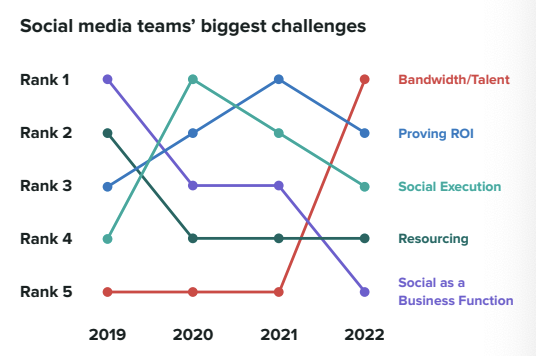
Whether you want to expand your team, build a larger following or a more active community, taking the time to define your social goals is the first step to reaching them.
Either way, your goals will define your social media marketing strategy and how much time and energy you’ll need to dedicate to your campaigns.
Example social media goals for 2023 and beyond
What really matters is that you set realistic social media goals.
Emphasis on “realistic”. We recommend tackling smaller objectives that allow you to scale your social efforts in a way that’s both reasonable and affordable.
Below are some example social media marketing goals that businesses of all shapes and sizes can pursue.
Goal example 1: Increase brand awareness
This means getting your name out there. To create authentic and lasting brand awareness, avoid solely publishing promotional messages. Instead, focus on content that emphasizes your personality and values first.
@sanisisters Photoshoot days are the best #fashion #photoshoot
Goal example 2: Generate leads and sales
Whether online, in-store or directly through your social profiles, followers don’t make purchases by accident. Social media gives you an avenue to generate revenue. For example, are you alerting customers about new products and promos? Are you integrating your product catalog into your social profiles? Are you running exclusive deals for followers?
Find your purse-onality 👜 https://t.co/nRyWji469Y pic.twitter.com/fUkXFeZRq2
— Lilly's Kloset (@LillysKloset) September 13, 2022
Goal example 3: Grow your brand’s audience
Bringing new followers into the fold means finding ways to introduce your brand to folks who haven’t heard of you before.
Growing your audience also means discovering conversations around your business and industry that matter the most. Digging through your social channels is nearly impossible without monitoring or listening for specific keywords, phrases or hashtags. Having a pulse on these conversations helps you expand your core audience (and reach adjacent audiences) much faster.

Goal example 4: Boost community engagement
Social media is all about engagement, so it pays to explore new ways to grab the attention of your current followers.
Sprout Social’s 2022 Index™ report shows consumers want to see content that highlights a brand’s products, services and personality, and customer testimonials.

This means companies need to experiment with messaging and content. For example, does your brand promote user-generated content and hashtags?
Even something as simple as asking a question can increase your engagement rate. Your customers can be your best cheerleaders, but only if you’re giving them a reason to do so.
Goal example 5: Drive traffic to your site
Simple enough. If you’re laser-focused on generating leads or traffic to your website, social media can make it happen. Whether through promotional posts or social ads, keeping an eye on conversions and URL clicks can help you better determine your ROI from social media.
Any combination of these goals is fair game and can help you better understand which networks to tackle, too. When in doubt, keep your social media marketing strategy simple rather than complicating it with too many objectives that might distract you. Pick one or two and rally your team around them.
Research your target audience and select your networks
Making assumptions is bad news for marketers.
Some 60% of organizations use social data daily, according to the 2022 Sprout Social Index™. Both leaders and practitioners can take advantage of the valuable insights social data provides.
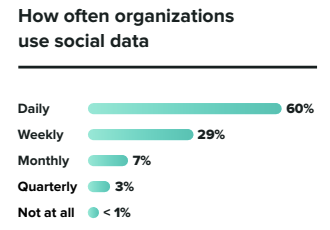
Much of what you need to know about your audience to influence your social media marketing strategy is already available. You just have to know where to look.
With the right tool, marketers can quickly research their audience. No formal market research or data science chops necessary.
Remember: different platforms attract different audiences
Take today’s social media demographics, for example. These numbers speak directly to which networks your brand should approach and what types of content to publish. Here are some key takeaways for your 2023 social media marketing strategy:
- Facebook and YouTube are both prime places for ads due in part to their high-earning user bases.
- According to the 2022 Sprout Social Index™, 71% of consumers and 65% of marketers plan on using Facebook the most in the next year. YouTube follows behind with 51% of consumers and 35% of marketers planning to use the platform.
- The top social networks among Millennials and Gen Z are Instagram and YouTube, signaling the strength of bold, eye-popping content that oozes with personality.
- Women make up more than 60% of Pinterest’s global audience.
- LinkedIn’s user base is well-educated, making it a hub for in-depth, industry-specific content that might be more niche than what you see on Facebook or Twitter.
- Consumers in the United States spend the most time on TikTok. And some 73% of users feel a deeper connection to brands they interact with on TikTok vs other platforms.
Demographics like the ones above are great for understanding where your target audience lives, but it’s also important to understand the nuances of each social network so you can decide where your business needs to be.
Bigger brands with large customer bases tend to have presences across multiple platforms. Giants like McDonald’s and Starbucks obviously have the resources to be everywhere at once, but what if you’re a mid-size or small business?
For the sake of narrowing down where you should spend your time, below is a quick overview of each of the major social platforms:
Simple and straightforward, Twitter is a solid starting point for most businesses. Requiring minimal setup and providing a place to go back and forth with followers directly, there’s a reason why Twitter remains the go-to platform for customer service. If you’re trying to master the social media marketing basics of hashtags, tagging, brand voice and social media etiquette, look no further.
The first flavor you find is the next
pint you should get. Tell us which one you found! pic.twitter.com/cX3HnuPxH2— Talenti Gelato (@TalentiGelato) August 30, 2022
Facebook is a must-have for brick-and-mortar businesses looking to target local customers. Allowing for check-ins and reviews, it’s a prime place to grow a dedicated local following. Plus, they have an incredible chatbot functionality that can take your customer service and marketing campaigns to the next level.
The platform’s recent algorithm change has made it difficult for some businesses to grow their Pages and stay in touch with fans consistently. That said, Facebook’s ad platform is the gold standard for social media ads because it can help businesses cut through the noise and algorithm changes.
Sunday Funday has officially started at Mary Mac's Tea Room! 🙌🏼🙌🏼 We are open all day from 11am – 9pm.. We look forward…
Posted by Mary Mac's Tea Room on Sunday, September 18, 2022
At its core, Instagram is a network centered around visual content. A major hub for brick-and-mortar businesses, e-commerce shops and influencers alike, the platform encourages brands to get creative. From eye-popping photos to clever captions, it’s all about finding unique ways to show off what you’re selling.
LinkedIn is a network laser-focused on business trends and networking. It’s a goldmine, especially for anyone networking in the B2B space. Looking to get in touch with an influencer, marketing manager or CEO? Chances are you can find them here.

This visual pinning platform is insanely popular with Millennials and is noted to be one of the best networks for social selling. Like Instagram, Pinterest thrives on imagery and inspirational content where products serve as the proverbial centerpiece.
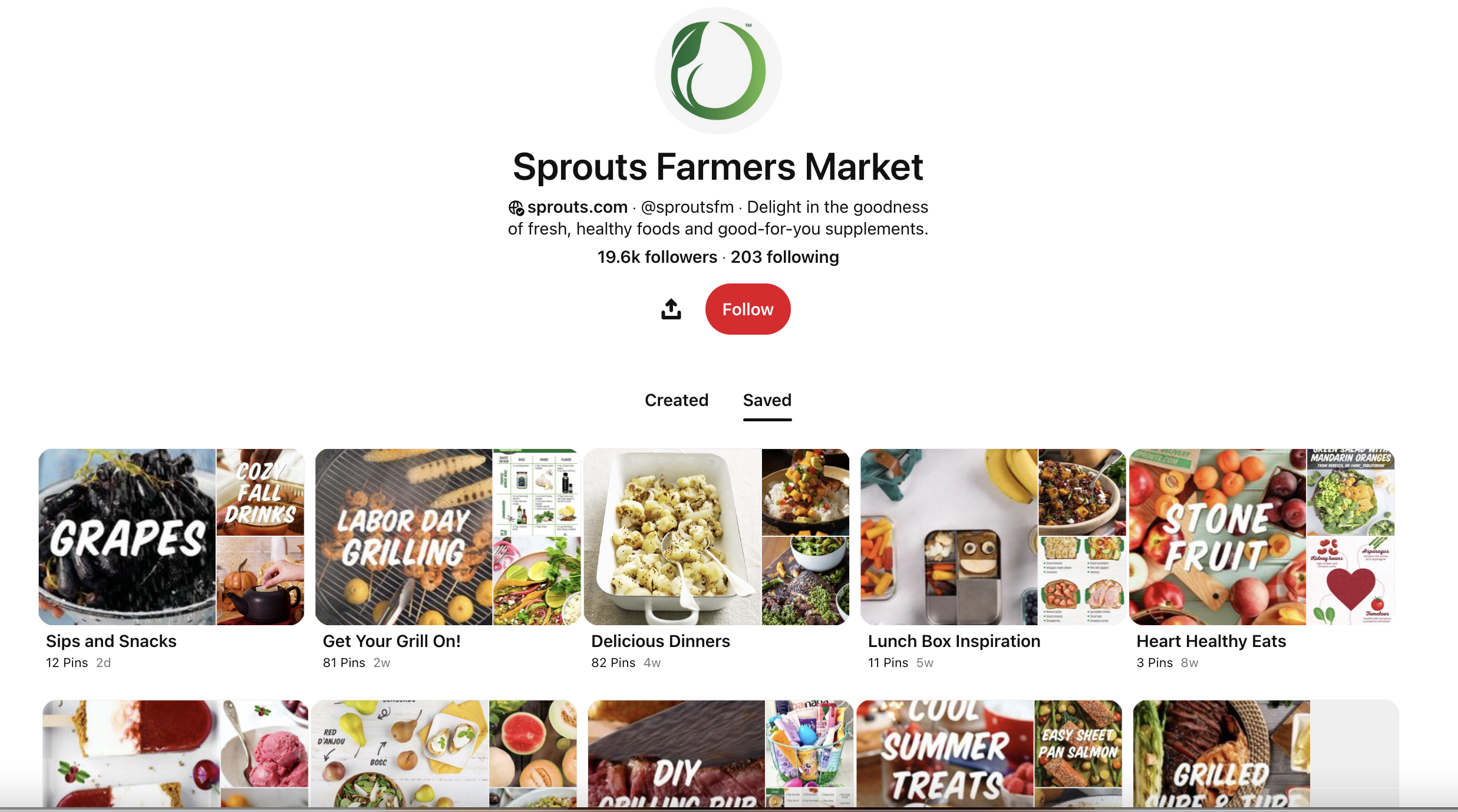
YouTube
Although some might not regard YouTube as a traditional social network, the platform’s active and engaged community speaks for itself. Considering that video represents the top-performing type of content across nearly every social network, YouTube is a great place to house your videos if you’re already producing them.
TikTok
TikTok reached 1 billion users in September 2021, making it the internet’s newest social media darling. Along with its viral trends and niche communities, the short-form video app is known for its hyper-personalized algorithm that keeps users scrolling for hours. TikTok marketing has changed the game for brands, allowing them to connect with customers in an entirely new way.
@starbucks Let’s hear it for the summer signs. ☀️ #Starbucks #ZodiacSigns
Picking networks for your social media marketing strategy
There are over 15 social media platforms your brand can use, but don’t spread yourself too thin. Rather than try to dominate them all, you should consider which platforms make the most sense based on your industry and target audience.
Do your homework on your existing social media audience and focus on networks where your core audience is already active. Further analysis needs to be done before you can determine what your real-world social customers actually look like.
That’s why many brands use a social media dashboard that provides an overview of who’s following you and how they interact with you on each channel.
For example, Sprout’s Analytics Dashboard puts your audience demographics front and center. It highlights which social networks see the most activity, helping you ensure you spend your time on the right networks. You can also use analytics to determine if you should create a new social media account.
With Sprout’s Group Report, you can view Facebook, Twitter, Instagram, LinkedIn and Pinterest data side-by-side in a customizable format that’s exportable by date range and profile.

There are plenty of other sources of valuable audience data to supplement your social media insights. This includes your Google and email analytics, your CRM, your customer service platform or even your best-selling products.
All of the above will ultimately influence everything from your marketing messaging to how you’ll approach customer service or social commerce.
Establish your most important metrics and KPIs
No matter your goals or industry, your social media strategy should be data-driven.
That means focusing on the social media metrics that matter. Rather than focus on vanity metrics, dig into data that aligns directly with your goals.
What metrics are we talking about? Check out the breakdown below:
- Reach. Post reach is the number of unique users who saw your post. How much of your content actually reaches users’ feeds?
- Clicks. This is the number of clicks on your content or account. Tracking clicks per campaign is essential to understand what drives curiosity or encourages people to buy.
- Engagement. The total number of social interactions divided by the number of impressions. This sheds light on how well your audience perceives you and their willingness to interact.
- Hashtag performance. What were your most-used hashtags? Which hashtags were most associated with your brand? Having these answers can help shape the focus of your content going forward.
- Organic and paid likes. Beyond a standard Like count, these interactions are attributed to paid or organic content. Given how much harder organic engagement is to gain, many brands turn to ads. Knowing these differences can help you budget both your ad spend and the time you invest in different formats.
- Sentiment. This is the measurement of how users react to your content, brand or hashtag. Did customers find your recent campaign offensive? What type of sentiment do people associate with your campaign hashtag? It’s always better to dig deeper and find out how people talk or feel about your brand.
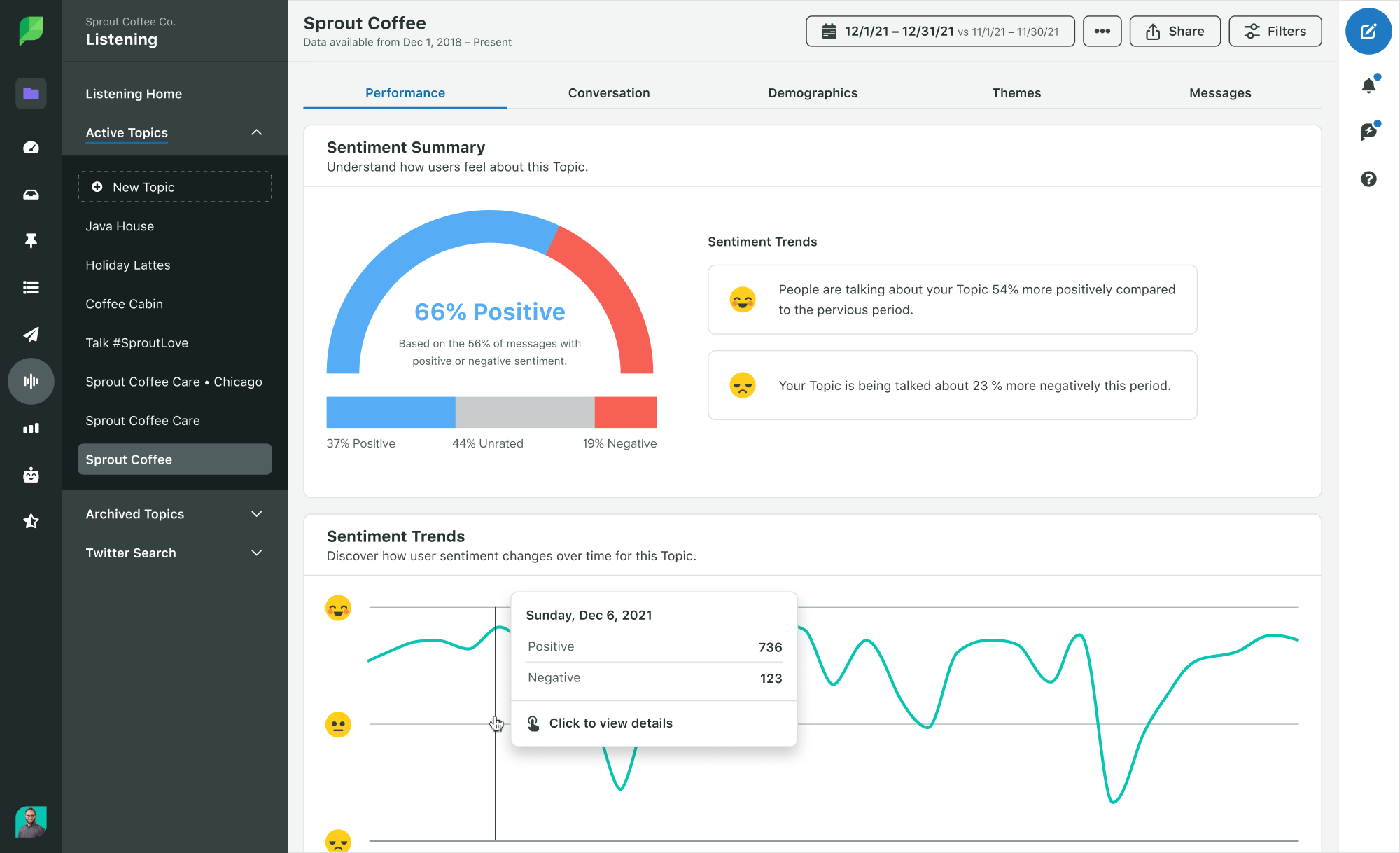
- Views. This data point measures video views, but different platforms have different requirements for it. For example, Facebook and LinkedIn count a view when a user watches a video for at least three seconds. From the popularity of TikTok to live streaming, video is taking the internet by storm, so familiarize yourself with social video engagement metrics if you plan on using it in your strategy.
An effective social media marketing strategy is rooted in numbers. That said, those numbers need to be put into a context that aligns with your original goals. Conduct analytics reports regularly to convey the story behind the metrics and see if your efforts match up to your vision.
Create (and curate) engaging social content
No surprises here. Your social media marketing strategy hinges on your content.
At this point, you should have a pretty good idea of what to publish based on your goals, audience and brand identity. You probably feel confident in which networks to cover, too.
But what about your content strategy? Below are some tips, ideas and inspiration that can help.
Defining your content strategy
Coming up with a content strategy might seem like a lot of legwork, but it all really boils down to your goals.
- Looking to educate your audience in the B2B space? Publish blogs, news and opinions relevant to your industry.
- Trying to push e-commerce products? Post action shots of your products and photos of others showing off your swag.
- Focused on customer service? Tips, shout-outs and company updates are fair game.
Regardless of what you might post, coming up with a hashtag to couple with your content is a brilliant branding move.
Generated from the magic of your mind, our latest flavor by #CocaColaCreations is almost here and ready to rock your world. 🤯 Get ready to #TasteTheWonder of #CocaColaDreamworld. ✨ #RealMagic pic.twitter.com/U0uMXFAsAm
— Coca-Cola (@CocaCola) August 10, 2022
Hashtags can be used to get your attention and encourage people to share their photos interacting with your brand.
📸👋Grab your cameras—we want to feature YOU at PoshFest 2022! Simply upload a video and you could see yourself on the screen at our annual #PoshFest2022 conference, and on Poshmark's social media.
Submit your video by 9/14 for a chance to be featured! https://t.co/shMqzjM63R pic.twitter.com/z4DSx1vlfM
— Poshmark (@Poshmarkapp) September 9, 2022
Find your brand voice
One of the best ways to stand out on social media is to define your distinct brand voice. Chances are you’ve seen a post from a particular brand that just feels like, well, theirs.
The quippy, casual tone that makes Discord’s Twitter presence beloved by casual users and moderators alike is a great example.
raise your hand if you are stealing memes. you're not in trouble, i just want to know.
— Discord (@discord) September 9, 2022
Of course, not every company will benefit from the same sort of tone. The key is to present yourself as a human rather than a robot. Adopt a consistent brand voice and style that’s appropriate for your business.
The importance of sticking to content themes
From graphics to Reels and beyond, many brands rely on the same content formats and creative touches time and again. These themes can help you become more consistent and zero in on a content strategy that makes sense.
For example, you might cycle between memes, product photos and user-generated content while sticking to a defined color scheme. If you’re struggling to keep up with all these sources of social content, consider social media management tools that help you organize your media library and schedule your posts in advance.
Content ideas for social media marketing in 2023
To help narrow down the specifics of what you should publish and make sure you’re developing innovative content, here are some social media trends to consider.
Stories and time-sensitive posts
Stories aren’t going anywhere. Tapping into your followers’ FOMO (fear of missing out), Stories-style content is both interactive and can’t-miss. Popping up first in your followers’ feeds by default, this content can help your brand’s account “skip the line” and stay fresh in your audience’s minds.
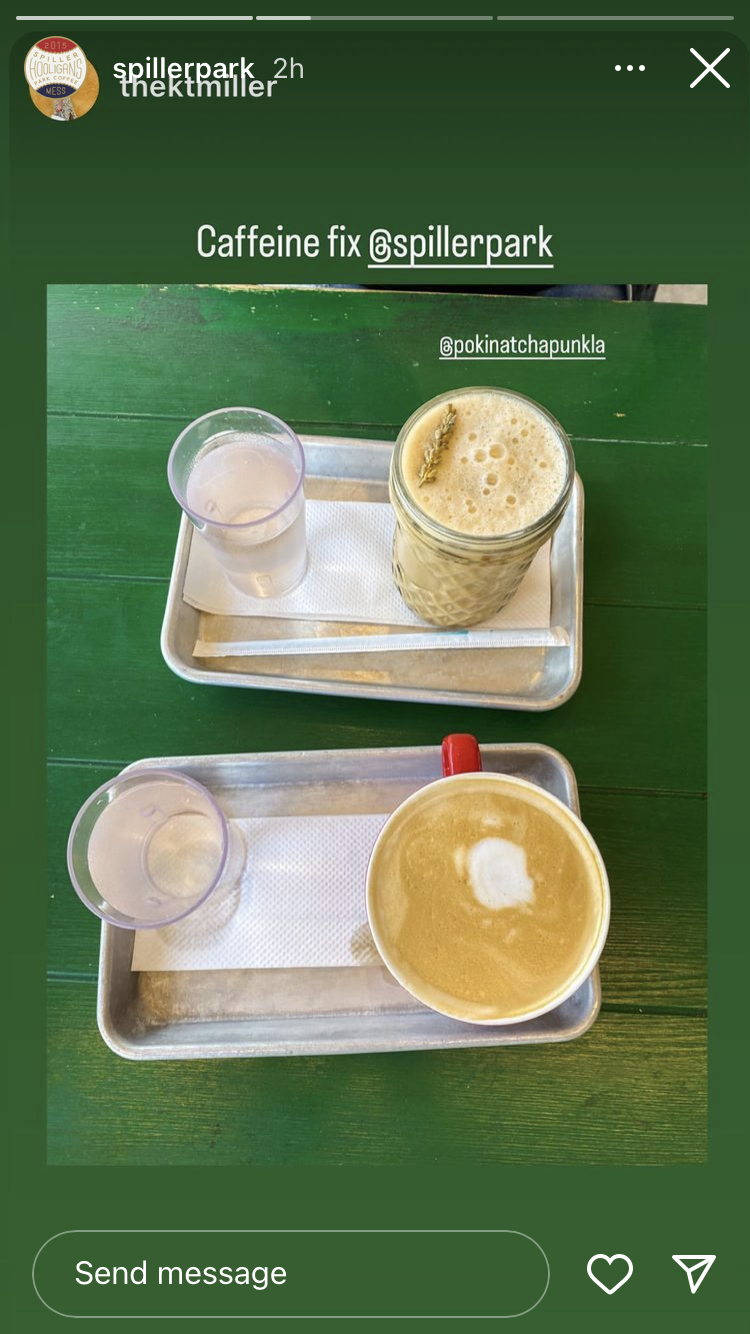
Stories are especially valuable for taking your followers behind-the-scenes and making your social feed feel more personal. For example, consider how you can use Stories to cover an event or take your followers on a journey without them having to leave the comfort of the ‘gram.
Short-form video
Social video is booming, especially with the rise of TikTok and Instagram Reels. Short-form productions continue to dominate the social space across all platforms due to their high engagement rate.
Sprout Social’s 2022 Index™ data shows that consumers find short-form videos 2.5x more engaging than long-form ones. Some 66% of consumers report paying the most attention to short-form content as well.
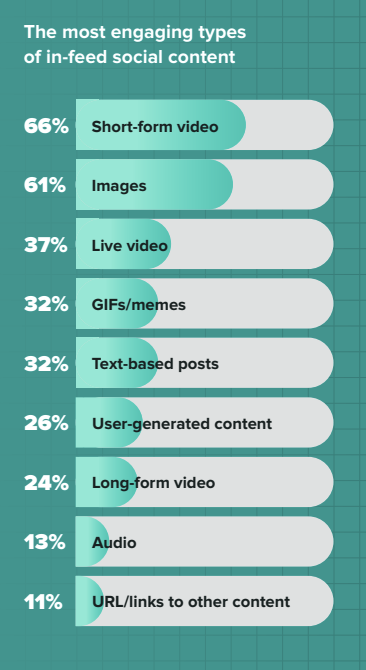
Thanks to advancements in DIY and remote video production, you don’t need a massive video production budget to be successful. All you need is a laptop or smartphone and a few tricks of the trade, like video length best practices and editing tools.
Posts that show off your human side
Both personal and personable content should be a cornerstone of your social media marketing strategy. Don’t be afraid to remind followers of the humans behind your posts.
Sprout’s 2022 Index™ data shows 34% of consumers want to see content that highlights a brand’s personality. Lean into the opportunity to be authentic and connect with your customers with humanized posts.
Take a break. It will help you be more productive and spark new ideas. ✨
— Sprout Social (@SproutSocial) September 22, 2021
Let's BeReal. Drop a photo of what your life looks like as a #SMM right now. 👇
— Sprout Social (@SproutSocial) August 9, 2022
Collaborate with creators
If you haven’t already, it’s time to tap into the creator economy. Social partnerships are very effective when executed correctly. They can help drive traffic to your website, produce compelling content and inspire purchase decisions.
But consumers care about creators’ qualifications, so choose wisely. The two most important qualifications of content creators is their experience with the product/service and their authenticity.
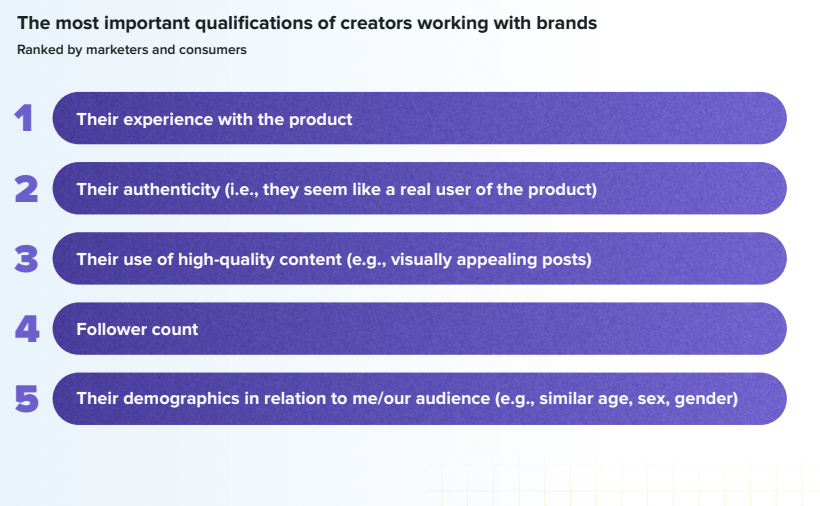
Identify creators who align with your brand and consider how they can help you craft stand-out content for your audience.
Metaverse marketing
The metaverse is projected to become an $800 billion market by 2024. And major companies and startups are already joining the metaverse by creating branded activations in this new emerging technology.
Get it early on @Roblox. Grill our new Garlic Guajillo Steak at the Chipotle on Roblox to try it in real life before it officially launches in restaurant. pic.twitter.com/2leclEJ2NO
— Chipotle (@ChipotleTweets) September 13, 2022
More than two-thirds of marketers anticipate investing at least a quarter of their budget into metaverse tactics over the next 12 months.
Pro-tip: conduct a competitive analysis to help your content stand out
Before you start creating content, you should have a good idea of what your competitors are up to.
While some brands might want to look into third-party competitor analysis tools to dig deeper into their competitors’ numbers, you can learn a lot from a simple review of your competitors’ social presence.
The simplest way to find competitors is through a Google search. Look up your most valuable keywords, phrases and industry terms to see who shows up.
Then, see how their social channels compare to your own. The goal here isn’t to copycat or steal your competitors’ ideas. No two companies’ social media marketing strategies can be (or should be) the same. Instead, determine what’s working for them and what conclusions you can draw to adapt your own campaigns accordingly.
After identifying some of your industry rivals, you can use competitive analysis to quickly compare competitor performance to your own.
See what they’re posting on Facebook. Contrast your Twitter engagement with theirs. Find out how they’re tagging their content on Instagram. Optimize your own strategy. Rinse and repeat.
You can also go a step further using Sprout’s Advanced Listening. Using social listening, you can spotlight unfiltered consumer feedback regarding competitors, as well as their products and services.
You get the added bonus of discovering honest conversations about your brand you may have otherwise missed.
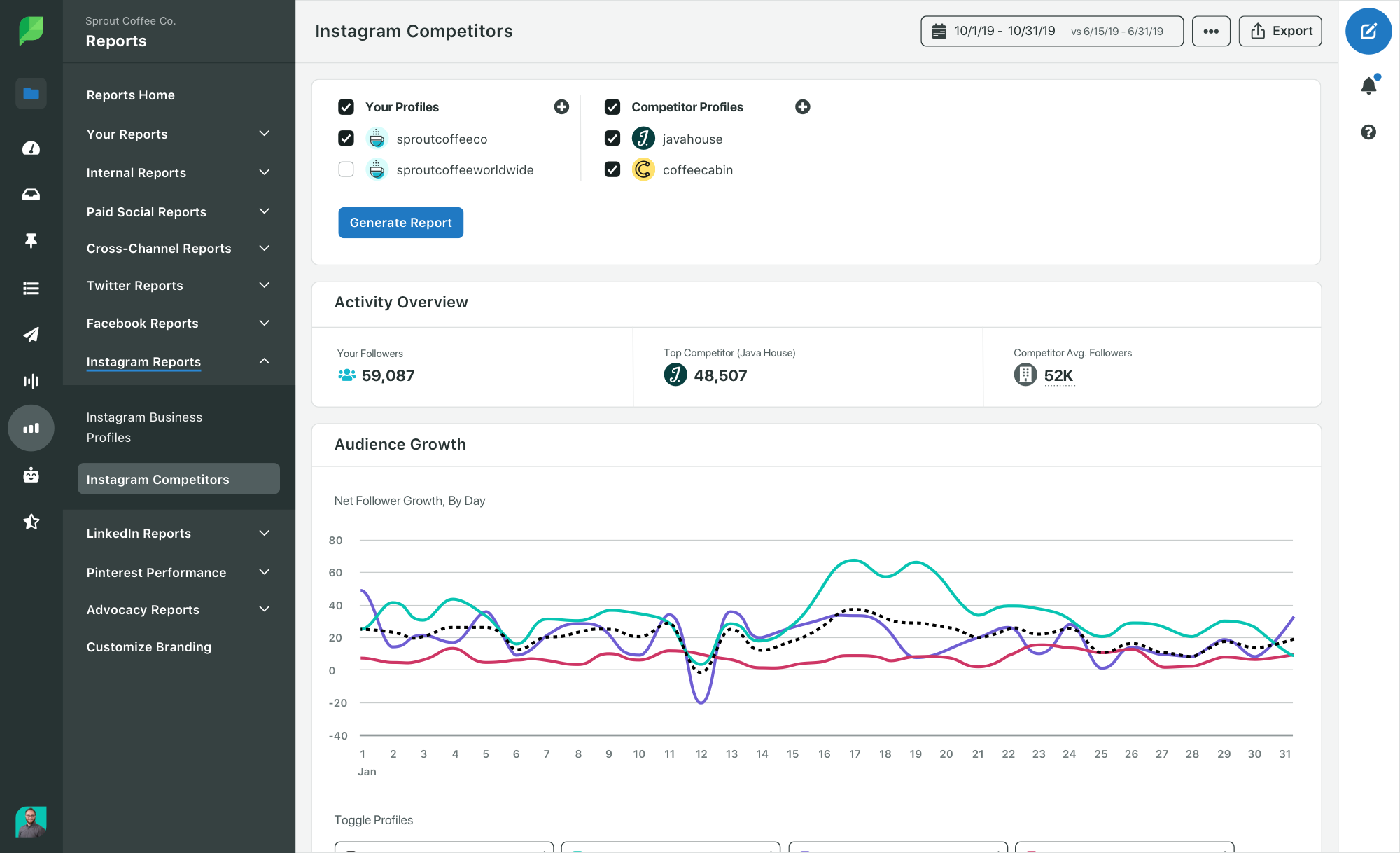
Make your social presence as timely as possible
Timeliness is arguably more important than ever for marketers. Not only are you expected to put out fresh content regularly, but also to always be “on” for your followers.
But you can’t always expect customers to operate on your clock. And timeliness is a tall order when you’re strapped for resources or are part of a small team.
Let’s look at some ways to maximize your schedule and your time spent on social media.
Assemble your content calendar
Use a content calendar to plan out your posts and stay organized. Knowing in advance what you’re going to post will save you a lot of time and keeps you from posting the same pieces of content too frequently.
With the help of Sprout’s scheduling and publishing, you can house your social posts, captions and creatives in one place.
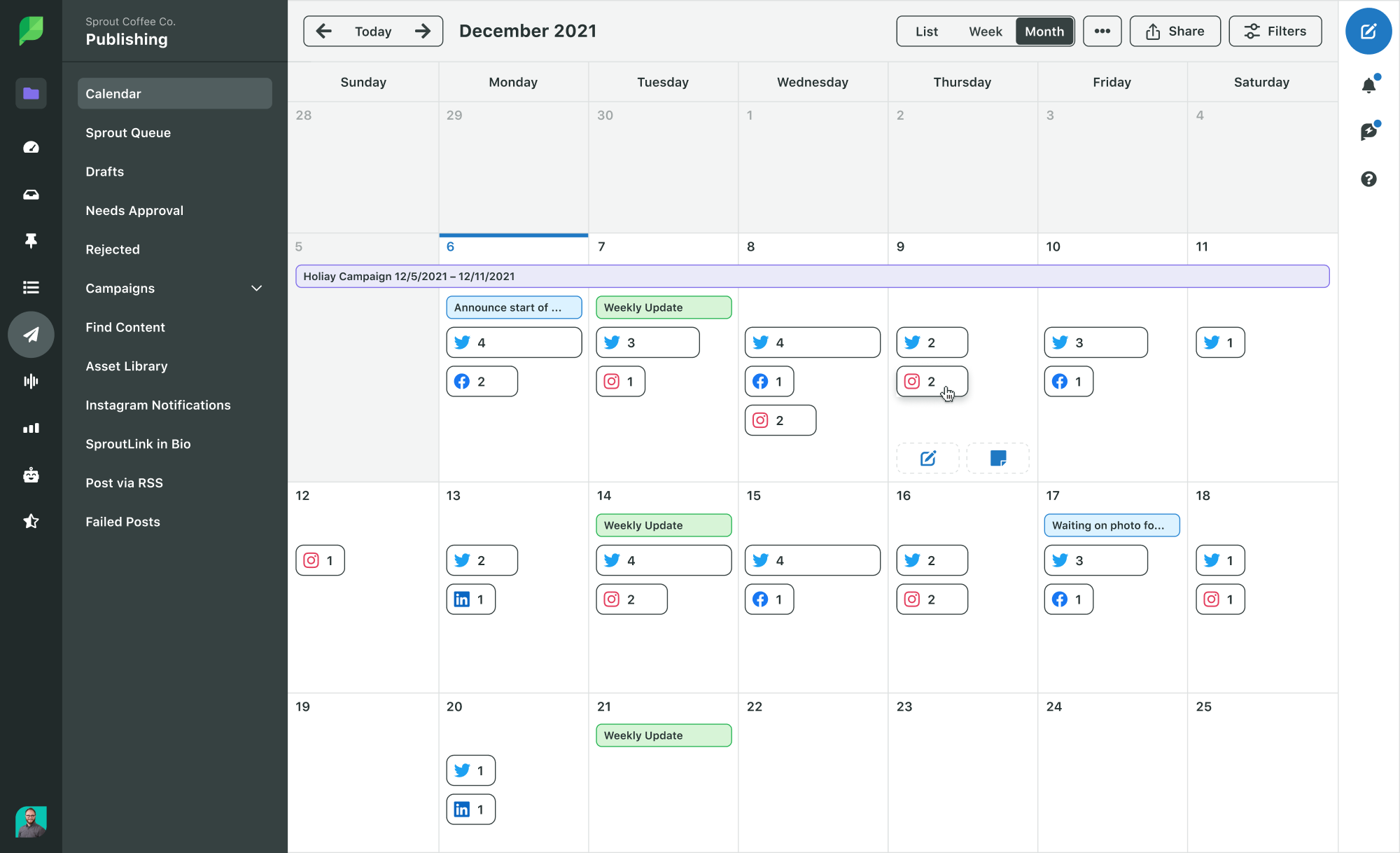
Post at the best times to engage
As evidenced by our best times to post on social, brands have a lot of ground to cover in terms of frequency and how much content to push. It’s important to pay attention to the optimal times for engagement so you can automate the most tedious aspects of your social presence without having to worry about posting in real time.
Sprout also offers a cool interactive tool that populates best times by industry and network. You can check it out here.
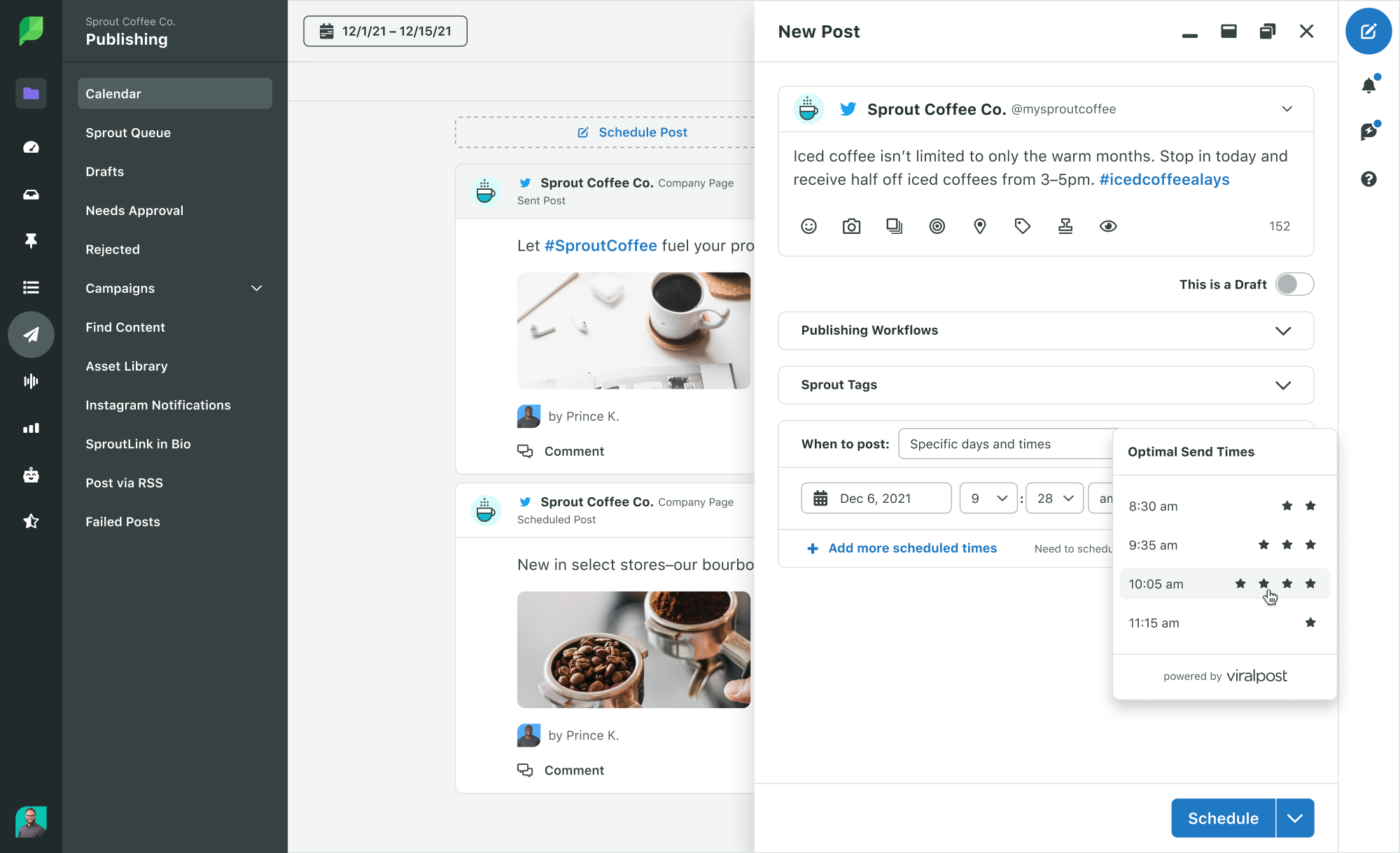
But, quick question: when is your brand available to engage and interact with customers?
You might see some recommended times to post late in the evening, for example. But if your team isn’t there to communicate, what’s the point of posting at the “preferred” time?
When you’re able to do so, ensure your social media or community managers are available and ready to answer any product questions or concerns when you post. You can also use automated replies to connect with customers when your team is offline.
Take time to review the best times to post on social media, but remember that it’s just as critical to engage after posting.
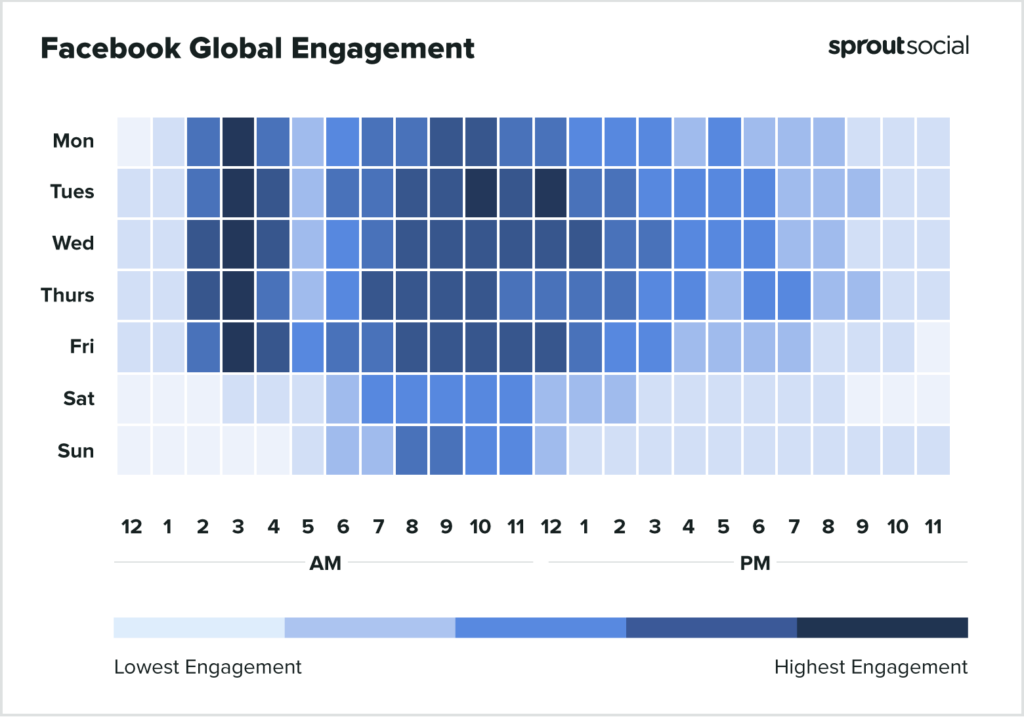
And that leads us to our next point.
Respond to your customer questions and shout-outs ASAP
Your customers want speedy responses. More than three-quarters of consumers expect a response within 24 hours, but 22% expect a response between 1-12 hours.
The 2022 Sprout Social Index™ infographic below illustrates the expectations of consumers and brands when it comes to response times.

Your brand can’t forget these core elements of community building. It takes effort to ensure conversations or engagement opportunities aren’t left unattended.
On social media, you gain respect as a brand by being present and talking to your audience. That’s why social customer care is so important to brands wanting to increase audience awareness—word travels fast about great service.
genuine question for other social media people… i see all of these huge brands using sprout… have y’all ever used sprout and what are your thoughts on it?
— cai 🐺✰ (@wolfiecai) September 13, 2022
Whether it’s capitalizing on a compliment or responding to a question, businesses shouldn’t leave customers hanging. According to our research, long response times have consequences: 36% of consumers say they’ll share that negative experience with friends and family. And a comparable 31% won’t complete their purchase.
This is why it’s so important to designate teams to specific response tasks. It can help your staff run like a well-oiled social media team, whether you’re a group of one or 100.
As social algorithms evolve, organic content has an increasingly tough time reaching the majority of your audience. The last thing you want to do is ignore those who do engage and lose out on sending more people down your marketing funnel.
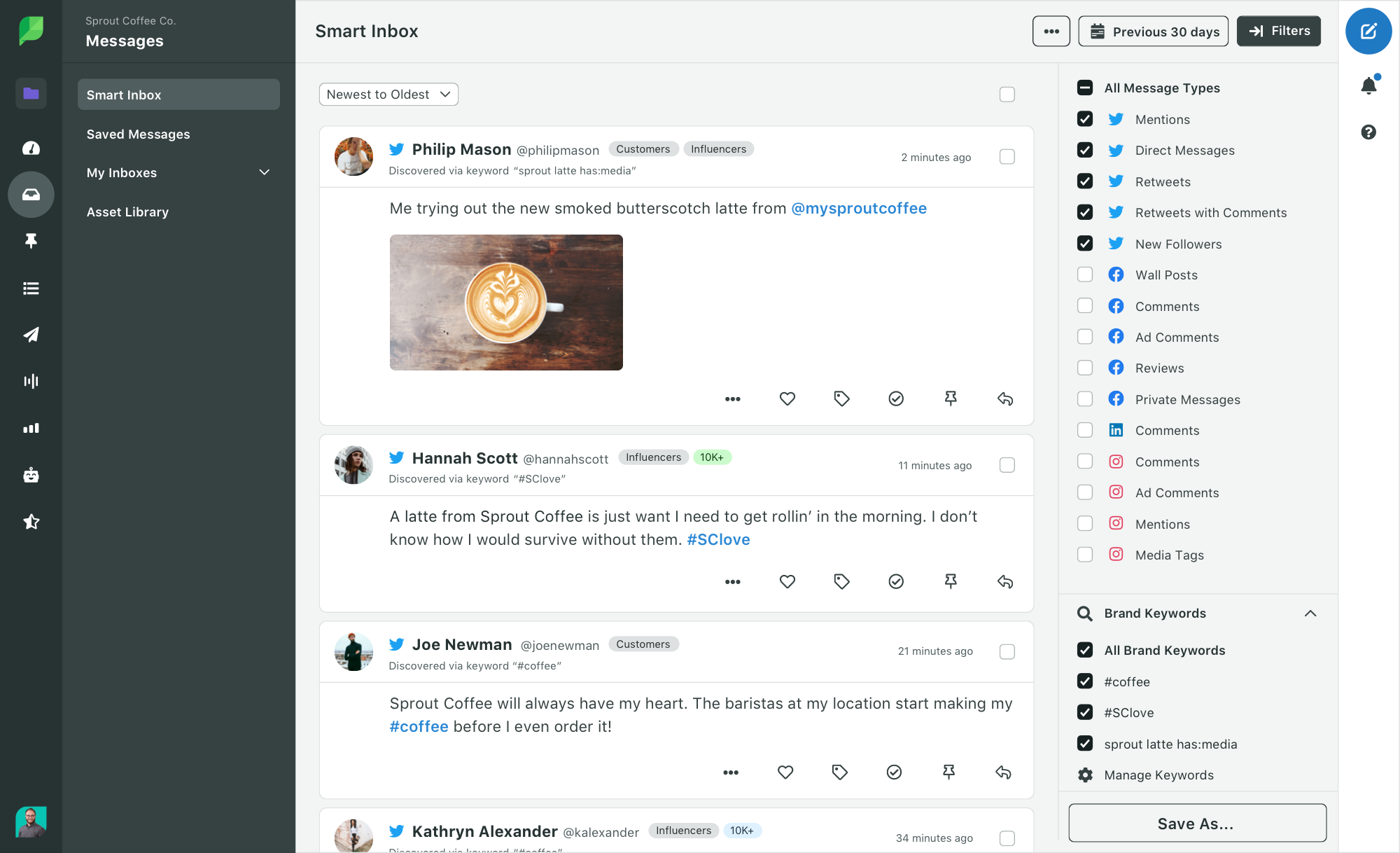
Evaluate and improve your social media strategy
By now you should have a big-picture understanding of your social media strategy. However, it’s important to adapt your strategy throughout the year.
Without continuously analyzing your efforts, you’ll never know how one campaign did over another. Having a bird’s eye view of your social media activity helps put things into perspective. This means looking at your top-performing content and adjusting your campaigns when your content stalls.
There’s no denying that a lot of social media is a matter of trial-and-error. Monitoring the metrics behind your campaigns in real time allows you to make small tweaks to your social media marketing strategy rather than sweeping, time-consuming changes.
Doing social media marketing right starts by being diligent about your data. You can be reactive in the short term to get the most out of your running campaigns, and then proactively use these takeaways to inform your next strategy overhaul.
To guarantee that you get in front of as many customers as possible, monitoring your growth is a major must-do. With Sprout, social reports can clue you in on everything from your top-performing content to how engaged your audience is. These reports are crucial for accountability and guaranteeing your numbers continue to tick upward.
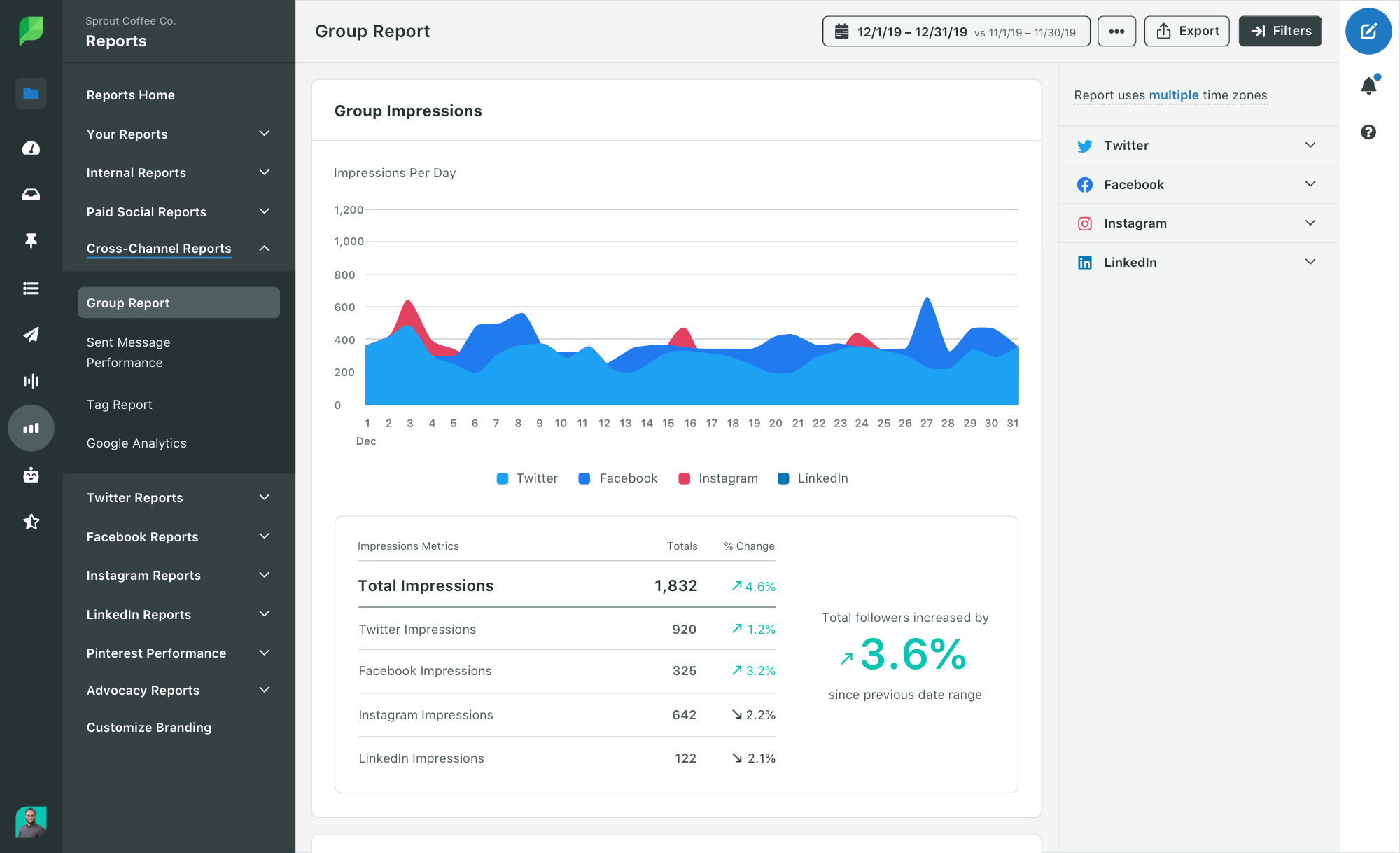
Reporting on data is also important for the sake of sharing valuable insights from social with your coworkers and colleagues. Remember that 60% of organizations use social data daily—be one of the brands that embrace it.
Sharing this information in regular social media reports not only holds you accountable for your efforts but also highlights the impact and bottom-line results your social strategy produces.
Based on your data, you can better assess whether your KPIs truly ladder up to your overarching company goals or whether they need to change.
Bring other departments into the mix
Social media teams have a unique advantage when it comes to understanding customer sentiment. You’re the eyes and ears for your brand online. Those insights can do more than just inform marketing strategy. They can transform your business.
Stand-out social media teams will approach cross-department collaboration with enthusiasm and intention.
Which departments can benefit from social data?
The short answer? All of them. But don’t bite off more than you can chew. Instead, start where you think you can make the most impact. Here are a few ideas to jumpstart your strategy.
Human Resources
Collaborating with human resources on social-first employer brand initiatives can do more than just fill open roles quickly. It can attract stronger, more qualified candidates as well. Many companies have embraced social recruiting strategies, such as publishing creative “we’re hiring” posts on LinkedIn to attract top talent.
Sales
Data from the 2022 Sprout Social Index™ notes that sales strategy is the number one use case for social data. Sharing social insights with your sales organization can empower reps to work smarter in the context of increasingly digital customer journeys. Consider learning more about social selling to leverage the power of online networks even further.
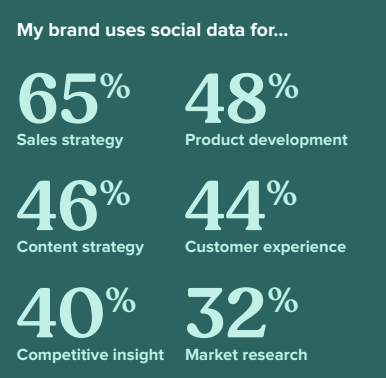
Product and merchandising
You’ve probably received quite a few feature or product requests while managing your brand’s social inbox. With a social media management tool, you can distill those messages into actionable insights for your product or merchandising teams. These insights can complement existing roadmap research, creating a customer-focused plan that delights.
And with that, we wrap up your social media strategy guide for 2023 and beyond!
Is your social media marketing strategy future proof?
This guide highlights plenty of moving pieces to maintain a modern social presence.
That said, putting together yours doesn’t have to be a drag.
If you set actionable goals and address each of the steps above, you’ll already be way ahead of the curve when it comes to your social media marketing strategy.
And if you need more inspiration for actionable ways to build out your strategies, make sure to download the 2022 Sprout Social Index™ to learn more.
Recommended for you
View all Recommended for you- Categories
Co-creation: Why creators should be part of your product development team
Published on March 1, 2023 Reading time 5 minutes - Categories
Social media for strategic communications: 4 ways to strengthen your brand narrative
Published on February 23, 2023 Reading time 5 minutes - Categories
Organic vs. paid social media: A hybrid strategy that works
Published on February 23, 2023 Reading time 12 minutes

Share